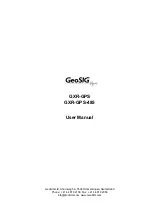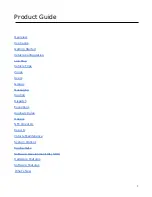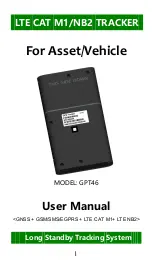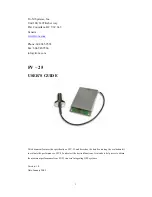
GPS 18 Technical Specifications (190-00307-00)
Rev. D
Page 24
APPENDIX B: BINARY PHASE OUTPUT FORMAT
In binary phase output mode, GPS 18 series products will transmit two types of packets once per second.
One record contains primarily post-process information such as position and velocity information. The
second record contains receiver measurement information. For the GPS 18 PC, GPS 18 LVC, and GPS 18-
5Hz, the records are sent at a default baud rate of 9600 baud, 8 data bits, and no parity.
To turn these records on for the GPS 18 PC, GPS 18 LVC, and GPS 18-5Hz versions, use the $PGRMC1
NMEA sentence as described in Section
4 GPS 18 PC, GPS 18 LVC, & GPS 18-5Hz
Refer to the
Garmin Device Interface Specification
for details on how to form and parse Garmin packets.
At the time of this printing, these specs are available from the technical suppport section of our Web site:
http://www.garmin.com/support/commProtocol.html
Note: For the GPS 18-5Hz, a baud rate of 9600 is not high enough to transmit all of the packets (since they
are output at a 5 Hz rate). You will need to change the baud rate to at least 38400 to be able to transmit all
of the packets. Refer to
Appendix C: Changing the Baud Rate in Garmin Mode
for information.
For the GPS 18 USB, the two records must be enabled independently by commands to the unit. Refer to the
Garmin Device Interface Specification
for details on how to form and parse Garmin packets over USB. At
the time of this printing, these specs are available from the technical suppport section of our Web site:
http://www.garmin.com/support/commProtocol.html
. The ID of each command should be 10 decimal to
signify that the record is a command. The data portion of the packet should be one of the following:
Function
Command (base 10)
Position Record On
49
Position Record Off
50
Receiver Measurement Record On
110
Receiver Measurement Record Off
111
Note that the satellite data information is also enabled when the position record is enabled.
Records sent over RS232 begin with a delimiter byte (10 hex). The second byte identifies the record type
(33 hex for a position record, 34 hex for a receiver measurement and 72 hex for a satellite data record).
The third byte indicates the size of the data. The fourth byte is the first byte of data. The data is then
followed by a checksum byte, a delimiter byte (10 hex), and an end-of-transmission character (03 hex).
Additionally, any DLEs (0x10) that appear between the delimeters are escaped with a second DLE. There
is sample code at the end of this section that will strip off the DLEs and ETXs.
RS232 Packet:
- 0x10
(DLE is first byte)
- 0x##
(Record ID – single byte)
- 0x##
(Number of data bytes – single byte)
- data bytes
(See descriptions below)
- 0x##
(2’s complement of the arithmetic sum of the bytes between the delimiters)
- 0x10
(DLE)
- 0x03
(ETX is last byte)
USB packets contain only the record ID, size, and data payload. Refer to the
Garmin Device Interface
Specification
for details on how to form and parse Garmin USB packets.
USB Packet:
- 0x##
(Record ID – single byte)
- 0x##
(Number of data bytes – single byte)
- data bytes
(See descriptions below)
The data bytes of each packet contain the record specified by the record ID. A description of each record
follows.










































